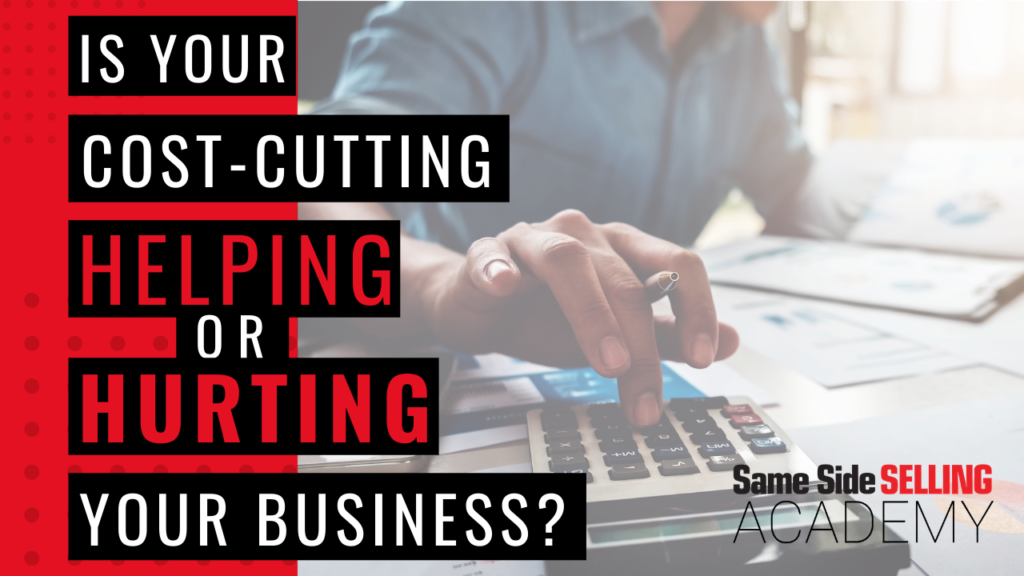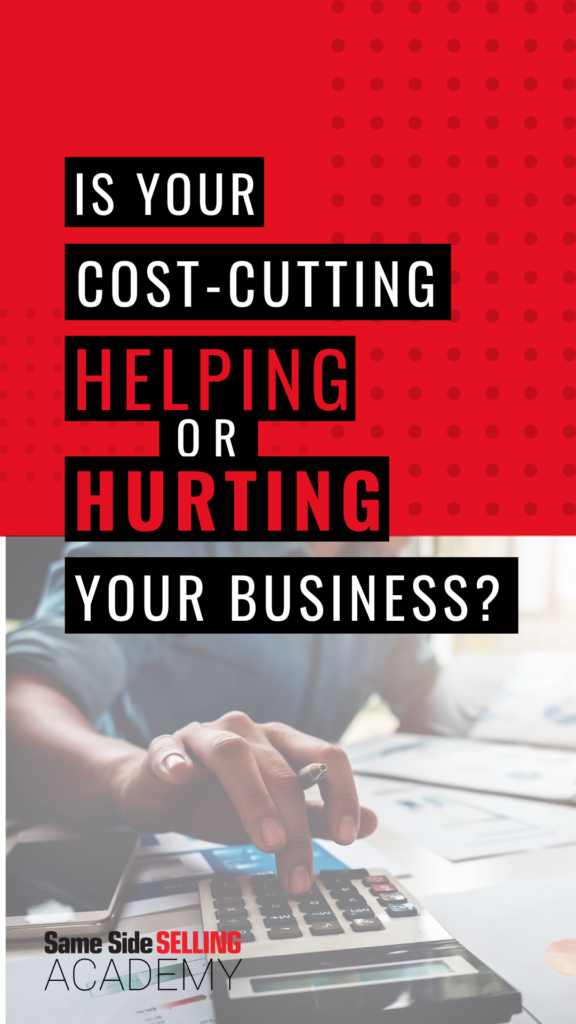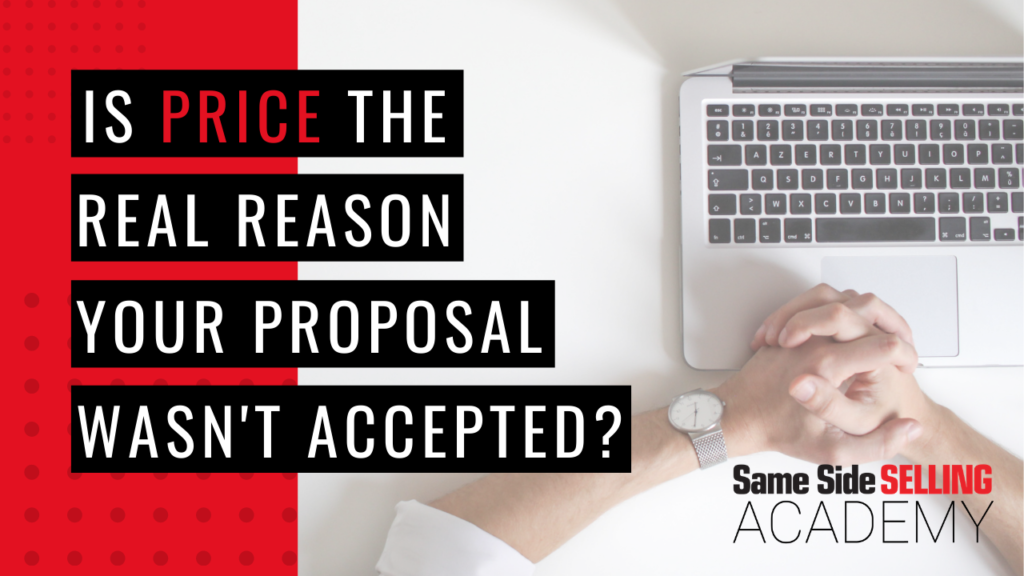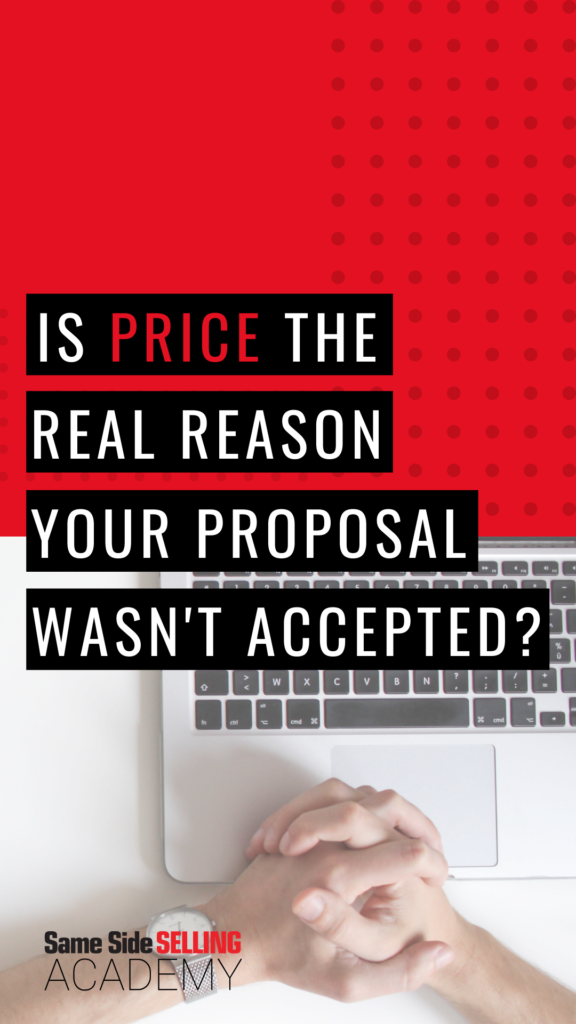How Top Sales People Build Their Skills
Welcome to the Same Side Selling Podcast. I'm your host, Ian Altman. Today's topic is, what separates the top performers from the people who just kind of skate by? And the thing I want to focus on today is practice, and not just whether you do it or not, but rather, what type of practice generates the greatest results.
In the Same Side Selling Academy, I work with hundreds of top-performing sales professionals, yet some outperform the others in the group. What I find is that they have a very consistent process for how they practice on a routine basis.
So first, what are the things that people do that they shouldn't be doing? What are their biggest mistakes? Well, in every profession, the top performers tend to practice more than the average performers. So, think about the best hitter in baseball, the best pitcher, the best basketball player, the person who's the best at free throws, the first violin in the symphony. These are all people who we all recognize as putting in the extra time to practice the fundamentals. My friend, Allen Stein Jr, who is a fellow speaker, speaks about his experience with the late Kobe Bryant, and he talks about his commitment to exercise and practicing the fundamentals over and over again, even when he was at the top of his game. So, the first big mistake is when I talk to sales professionals who say, well, I meet with clients all the time, so I don't need to practice. I'm already really good at it. And that's a huge mistake because what you're acknowledging at that point is that you would much rather make a mistake with a real client when it matters than to practice with a colleague when you can learn.
The second big mistake that people make is when they do actually take the time to practice, is they do what I call Groundhog Day practice. And that means that they practice the same scenario over and over again. And to make matters worse, they practice that same scenario over and over again with the same person. Which means they get really good at dealing with that one scenario with that one individual. It's not a sustainable model unless you know that the person you're practicing with is going to become a client of yours in the near future. Then maybe it makes sense. Otherwise, not so much.
The other mistake that people make is they either practice sessions that are too short or too long. So, either they go forward in a practice session that is about three minutes long. Like, no sales meeting has ever been that short. Or they say, okay, we're going to roleplay the scenario for the next half hour, 40 minutes. Well, the problem with that approach is that what we want to do is we want to practice individual segments or parts of our interactions. Think about it. If you were practicing for a Broadway show, you wouldn't just practice from the first scene to the last scene over and over again. No, they practice individual scenes and get the blocking and staging and all the nuances in each of those. At the very end, they pull everything together. But all their practice is at individual levels. It's just like hitters. They don't just sit up there and practice the entire game. They say, okay, so here's a scenario, we have a runner on second, it's a tie game, what do you want to do? And that hitter is just going to hit balls to the opposite field all day long to advance the runner. But they don't practice just hitting the ball out of the park every swing. That's not a practical way to practice.
The last mistake that people make is that when they practice, they don't have results or a goal in mind. Meaning that what they do is they say, oh, yeah, we're going to practice. We're going to roleplay. And if I ask them, What's your goal? How are you evaluating what you're doing? They say, well, I don't know someone told us to practice, so I guess that's what we're doing. We need a better approach for doing this. And this is something that, in the Same Side Selling Academy, we built something called Same Side Improv. In Same Side Selling Improv, we used to have it as a card game. It was a physical card game, like a deck of cards, and you would pick different cards. In today's day and age, we made it so that it's all digital. So, you don't need to have a deck of cards with you. The cards don't get worn out. It's always a fresh deck, and you can practice different scenarios. The idea is that we're practicing real-world situations. So, the first thing we do is get three different players involved. So, for every round of Same Side Improv, we have a salesperson, we have someone playing the role of the customer, and then we have an observer. The reason why is the observer is there to take notes and give us feedback. Because the other two people are living in the moment, they might forget or overlook things. I will tell you; the observer consistently is the person who says they learn the most in each round. We make sure that we're not having the same scenario over and over again. So, the first thing we do is say, okay, paint a picture of a real client situation you have right now. And so and so gets to play the customer. And whoever is playing, the customer now picks one or more of these Same Side Improv secret cards. And the secret cards will say things like, you don't trust vendors. You failed trying to implement this before. You're trying to get free information. You're only focused on price. There's executive pressure to solve this. There are 20 some odd, different variations of these secret cards. And so, the person playing the customer plays those attributes for each round. That way, you're getting a different situation and a different customer each time, even if it's somebody you're familiar with. But they're playing the role that is conveyed through those cards.
We want to make sure we get that third-party feedback, but we need to have a goal in mind. So, the goal is that what we do in the Same Side Improv world is we focus on the Same Side quadrants. This method that I teach in Same Side Selling, which is all about how we collect information during these prospect meetings. This is how we take our notes. The upper left quadrant is where we take notes about the issue or what it is the clients trying to solve. In the upper right quadrant, we take notes about impact and importance, namely, what happens if they don't solve it? And how important is this compared to other things on their plate? And the lower left quadrant, we take notes about results. Meaning, what does success look like down the road? In the lower right quadrant, we take notes about who else is impacted or who else do we need to include in the process? The idea is that you're measured based on how well you extract the information and ask questions to unpack that information about the four quadrants.
Now we also have a section in Same Side Improv that talks about different skills and scenarios. Meaning you might have a section where you say, okay, I just want you to practice setting up a meeting to set expectations. I want you to practice the client vision pyramid, which is a way for us to show how we're differentiated from the competition in a non-threatening way. We may practice how do we deal with someone who says I already have an existing vendor. So, these are little micro setups that you get to practice those specific scenarios. Just like running a certain play in basketball or practicing a certain section of the symphony, we're practicing those pieces that are most likely to come up.
The last two really important components are to have fun because sometimes people will take it way too seriously, and if you're not laughing and having fun with some of this stuff, you are kind of missing the point. And make sure that you don't always end up with a positive outcome. Meaning, it's not always, oh, yes, I'd love to do business with you. This is great. In fact, at least a third of the time, the conclusion should be, I don't think they're a good prospect for us because that's reality. More often than not, businesses spend too much time focusing on the wrong opportunities that will not generate results for your business. So, we want to make sure that we're providing a realistic environment so that as you ask them questions, you start to learn, you know what, that's not a situation that we want to be in.
You don't have to use Same Side Improv. You can use whatever tools you want. But make sure that you have those different elements. Make sure that you have a variety of scenarios that come up. Make sure that you have these secrets that you don't even know about the person playing the customer mixes into each scenario so that you're not facing the same thing over and over again. Get feedback from a third party so that you're not just, in the moment, trying to remember what you saw, but an observer is taking notes and giving you feedback at the end of the session.
A typical scenario that works well for us is about a 10-minute interaction. And then you get feedback from each party, starting with the observer, then from the person playing the customer, and finally from the salesperson on what they learn. The idea is not to be hypercritical, but to say here are the couple of things that I thought you did really well, and here's one thing that I was thinking maybe you could do differently next time. And then we learn from that experience.
See, this is the way we develop top-performing teams because then when you're in front of a client, and the client starts asking questions or making statements, that happen to be the same statements you make when you have the card that says, I don't trust vendors, you can say, I get the sense that maybe you haven't had a great experience in the past with other vendors. What are the two or three things that we can show you so you'll feel confident that you're not going to have that same problem in dealing with us? And that way, you're prepared to deal with the situation, so you're not making mistakes when it counts, but instead, you're practicing and learning so that when it really counts, you're prepared to deliver great results.
If there are additional topics you'd like to see on the Same Side Selling Podcast, just drop me a note to [email protected], and we'll see you next time on the Same Side Selling Podcast.



